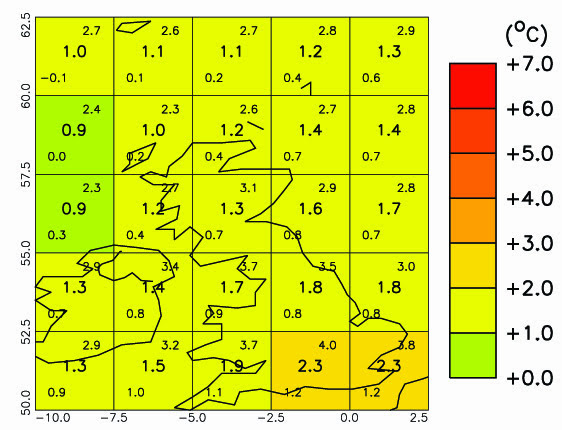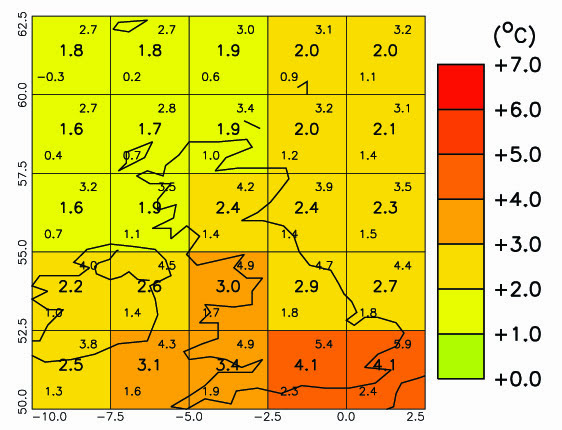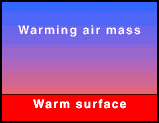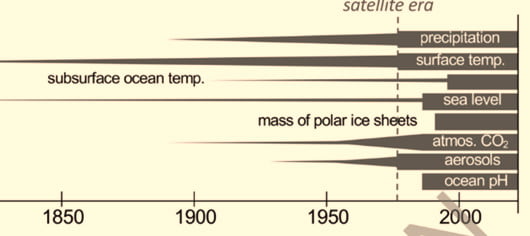June, July, August Temperatures in the 2030’s, 60’s and 90’s
- These 3 maps show projected June, July and August (JJA) temperatures in the 2030s, 60s and 90s (according to a high carbon dioxide emission scenario, A2).
- All values are anomalies– the difference in temperature to the average of 1970 to 1999 temperatures.
- Areas shaded red will be 6-7°C hotter than average temperatures from 1970 to 1999, whereas areas shaded green will be about the same as the 1970-1999 average.
- The number in the centre of each grid box is the average JJA temperature anomaly we expect having had high carbon dioxide emissions; the smaller numbers in the upper and lower corners give the range of average temperature anomalies that might occur.
- We use the term JJA rather than summer because most climate change maps are for the whole globe and seasons vary around the globe.
McSweeney, C., New, M. and Lizcano, G. (2009) Climate Change Country Profiles – UK. Oxford University School of Geography and Environment and the Tyndall Centre for Climate Change Research. Report commissioned by the British Council, RMetS, RGS-IBG for www.climate4classrooms.org






